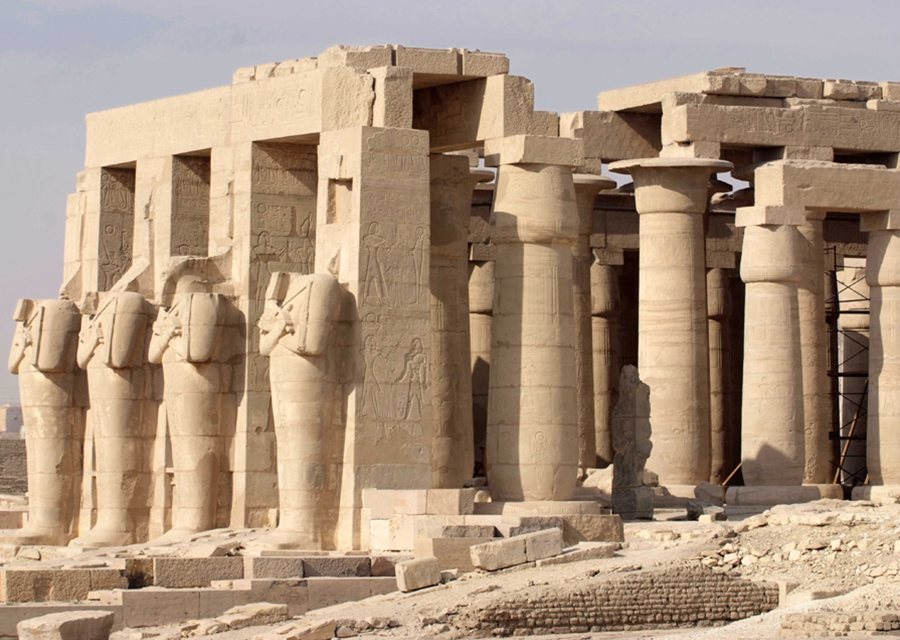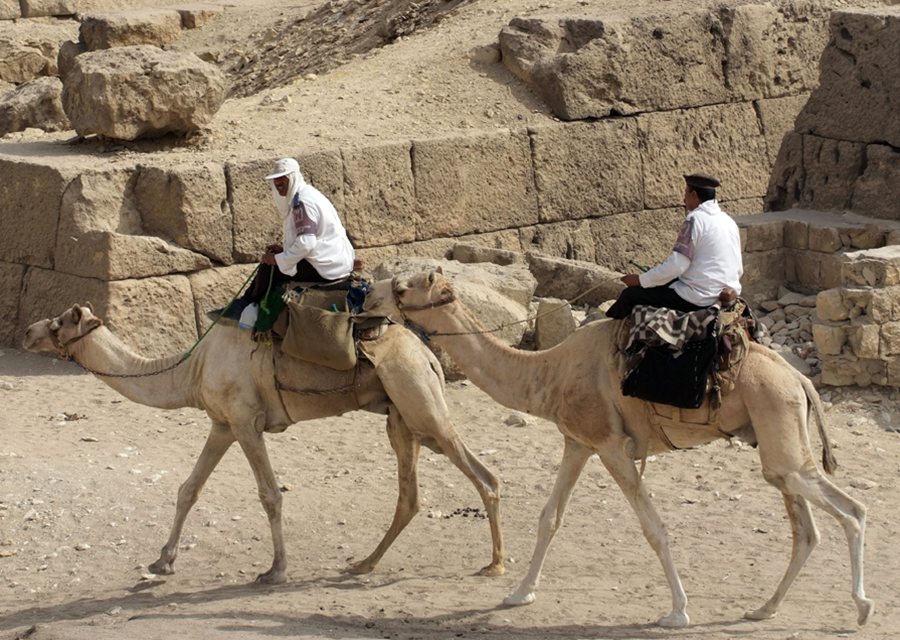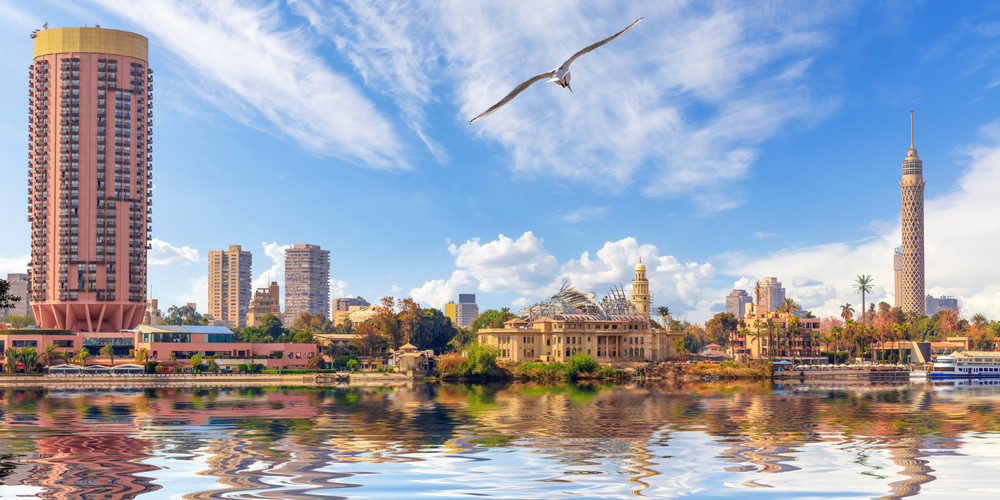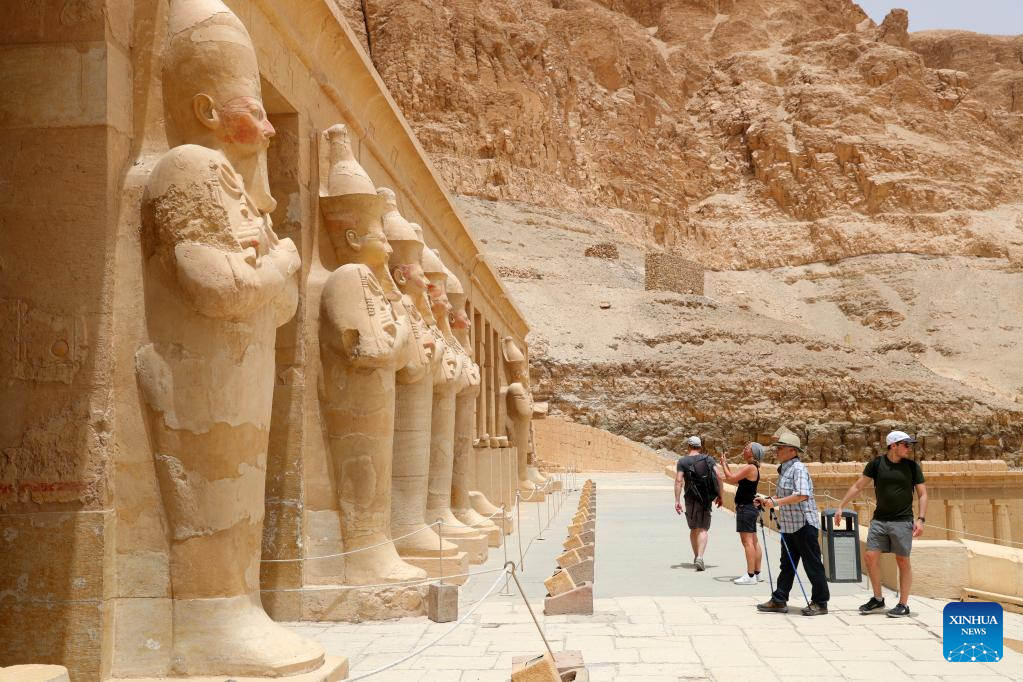Luxor And Karnak travel guide

The monumental temple complexes of Karnak and Luxor rank among the world’s greatest ancient sites. In terms of artistic achievement, they are Egypt’s finest; in scale, its most impressive. Beautiful artefacts found on site are displayed in two worthwhile museums.

Ancient Thebes, Luxor’s ancient ancestor, was one of the greatest cities of the ancient world. Serving as the political capital of Ancient Egypt during the Middle and New Kingdoms (2160–1064 BC), the city benefited from the splendid patronage of some of Egypt’s most powerful pharaohs, among them Sety I, Rameses II and Queen Hatshepsut.
Then, as now, the city staddles both banks of the Nile. The East Bank, where the sun rises, is the site of temples and palaces; the land of the living. This is where you'll find the extraordinary temple complex of Karnak. The West Bank, where the sun sinks, has tombs and necropolises, the best known being the Valley of the Kings; this is the land of the dead.
What to see in Luxor – East Bank
Temple of Karnak
Known as Ipet-Isut (Most Perfect of Places) to the Ancient Egyptians, Karnak was dedicated to the city’s most powerful triad: the god Amun, his consort Mut (the Mistress of Heaven) and their son Khonsu, the moon-god.
Covering some 40 hectares (100 acres), Karnak is a vast site. For more than 1,500 years it was the most important religious and intellectual centre in Ancient Egypt.
Begun during the Old Kingdom, it became the national shrine from the 11th Dynasty, c.2134BC. The temple complex was expanded during the following centuries, with each pharaoh adding his own shrines and monuments to make his mark. Karnak was abandoned around the 4th century AD when the Egyptians turned to Christianity.
Avenue of Sphinxes
As ‘the Harem of the South’, as it was known, Luxor was connected to Karnak by a 3km (2-mile) long processional Avenue of Sphinxes (4th century BC), part of which is still visible, the rest of which is currently undergoing excavation. Eventually, it will be renovated in its entirety all the way to Karnak.
Temple of Luxor
Like Karnak, the Temple of Luxor was dedicated to the mighty Theban triad of Amun, Mut and Khonsu.
The core of the temple was built by Amenhotep III (1390–1352 BC), and even though it was embellished and expanded several times, its plan remains much simpler and more compact than the complex in Karnak.
Mummification Museum
It may not sound terribly enthralling, but this little museum is actually most imaginatively designed and gives an interesting overview of the elaborate mummification process. Exhibits are carefully chosen and include a mummified ram, some mummies and the simultaneously delicate and gruesome-looking mummification instruments themselves.
Luxor Museum
Among this small but select collection of ancient artefacts, the many highlights include the splendid statues of the young King Thutmose III and Amenhotep III held by Sobek, the crocodile-god. Equally impressive are the fine heads of the rebel pharaoh Akhenaten and other objects emanating from his temple in Karnak following its destruction by later pharaohs trying to eradicate his memory. The New Hall has a display of the cache of statues found in the Temple of Luxor.
What to see in Luxor – West Bank
The place of the setting sun, Luxor’s West Bank was devoted to the dead. Pharaohs and kings opted to be buried in the secluded and secret Valley of the Kings; their nobles, princes, ministers and viziers chose the Valley of the Nobles, opposite their masters. In between lie spectacular and conspicuous mortuary temples built by the pharaohs, including the Madinat Habu, Dair Al Bahari and the Ramesseum.
Valley of the Kings
Unlike their predecessors, the pharaohs of the New Kingdom preferred discreet tombs to monumental pyramids.
There are 63 tombs in the Valley of the Kings, but not all are open; tombs rotate opening times in order to reduce the exposure of the wall decorations to humidity caused by human breath and perspiration.
One of the most popular, the Tomb of Tutankhamun (separate entry ticket available at the tomb) is one of the smallest and least decorated. The king died very young, and artisans had only just begun to dig the chambers. His tomb is therefore small and sparsely decorated. The discovery in 1922 of the undisturbed tomb with its vast treasure trove intact is what continues to draw visitors. Also, Tutankhamun’s mummy is the only one still to be found in situ – many others are on display in the Egyptian Museum in Cairo. For more on Tutankhamun, read here.
The latest and largest tomb to be discovered, KV5, is still being excavated by the American archaeologist Kent Weeks. So far, he and his team have found more than 110 rooms, which would have housed more than 50 of Rameses II’s sons. The tomb is closed, but you can follow Weeks’s progress on his website (www.thebanmappingproject.com).
The most splendid tomb, with fine wall carvings, belongs to Sety I, but this is closed definitively to the public because of its fragile state. Other tombs worth visiting are the Tomb of Rameses VI, the Tomb of Rameses III with its painting of musicians, the newly opened Tomb of Montu-Hir-Khopsef and, one of the largest, the Tomb of Thutmose III.
Temple of Hatshepsut
One of the most impressive Theban temples is that of Queen Hatshepsut. A remarkable woman, she ruled as coregent with her brother, Tuthmosis II, and then her stepson, Tuthmosis III. The Temple of Hatshepsut (Deir al-Bahari), dedicated to the goddess Hathor, is a vast three-tiered structure, carved into the base of the rose-coloured hillside, facing out towards the river. Each level has a colonnade facade, and it is only as you approach it that you appreciate its monumental scale.
The Ramesseum
Rameses II (1279–1212 BC) originally planned his mortuary temple to be grander than anything he had built previously. Unfortunately, the land he chose for it later came to be inundated annually, and his temple fell apart. His colossus, weighing over 900 tons, fell over and smashed the Second Pylon and the Second Court; it now lies in pieces, scattered all over the temple.
The pylons and walls of the Main Hypostyle Hall are decorated with scenes of Rameses II’s victories, while one of the smaller hypostyle halls has a remarkable ceiling depicting the oldest-known 12-month calendar.
Tombs of the Nobles
Though the quality of the decorations in these tombs may be inferior to those in the Valley of the Kings, they are far less visited, and in many cases the paintings are in better condition. While the pharaohs decorated their tombs with scenes from the Book of Dead, the nobles chose day-to-day scenes, so shedding light on their ordinary, daily lives.
Source: insightguides.com
Edited by: Vietnamarab.net






.jpeg)
.jpeg)


.png)



